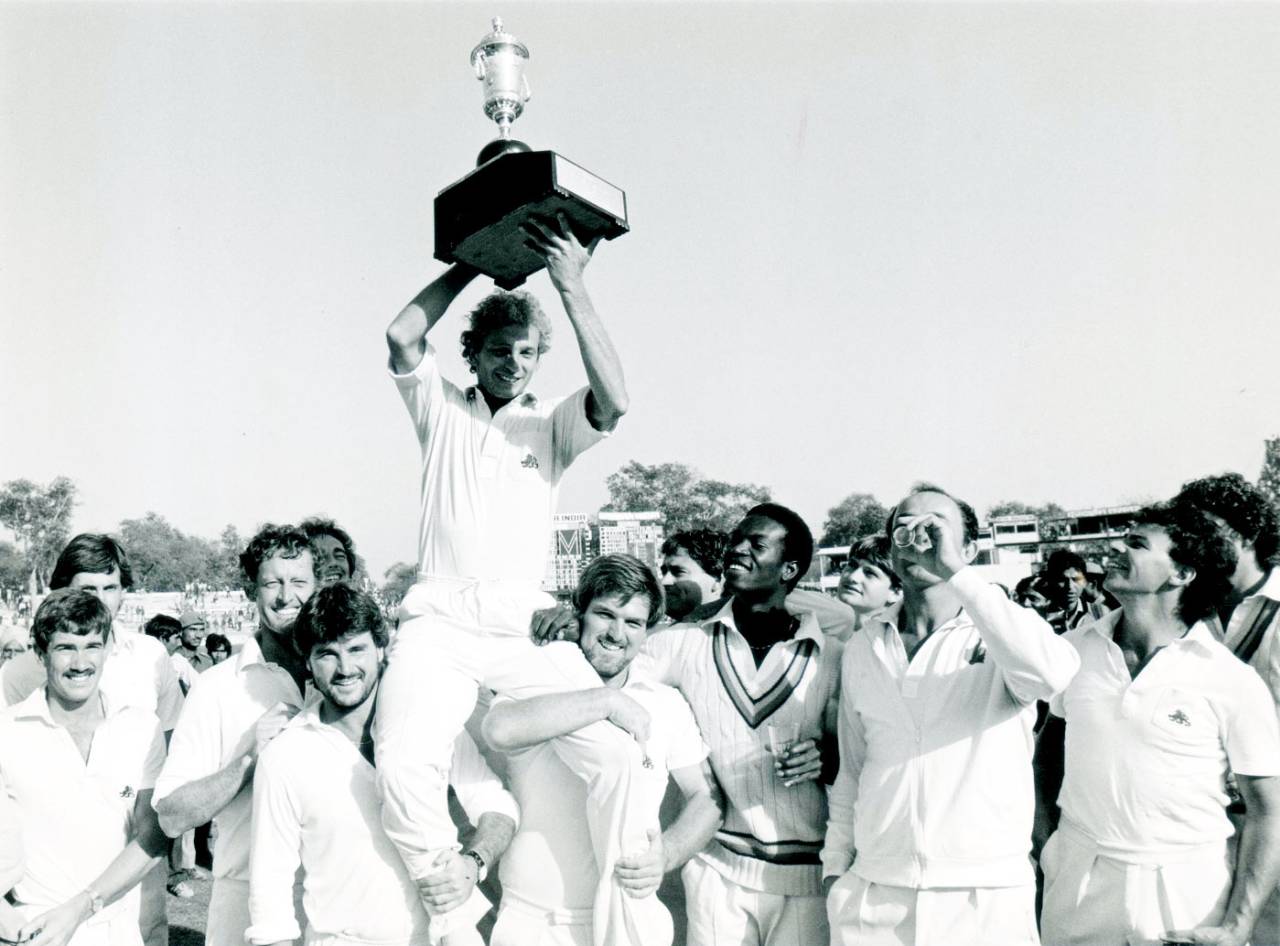During the Tiger Pataudi years India regularly ran through visiting teams with a three-pronged spin attack on turning tracks. But the stratagem did not always work against the fabulous West Indies batting line-up: in 1967, when the spin trio of Prasanna, Chandrasekhar and Bedi came together for the first time, and in 1974, with the three still in force and Venkataraghavan in and out of the attack, the Caribbean batting juggernaut proved just about too strong, though they were severely tested by the slow men.
The Australians too managed to stay just ahead of the Indians despite India's home advantage. Ajit Wadekar, who led India successfully in the West Indies and England, pursued the Pataudi policy successfully, sometimes fielding as many as four spinners at home when allrounder Salim Durani could be fitted into the scheme of things. Tony Greig and his men did deal with the conditions better than previous England teams when they toured in 1976-77, but Indian domination at home was the norm.
India's successes abroad, in New Zealand in 1968, and in England and the West Indies in 1971, and in England in 1986, were exceptions to the rule that the Indians travelled poorly. English and Australian critics used to be fond of saying patronisingly that India were hard to beat at home.
It was David Gower's England who changed the trend in 1984-85, after losing the first Test,
in Bombay, and 19 wickets in two Tests to young legspinner L Sivaramakrishnan. They eventually romped home series winners, thanks to some phenomenal batting by the likes of Mike Gatting and Graeme Fowler (who both scored double-hundreds
at Chepauk), Tim Robinson and Gower himself.
Eight years later, Ajit Wadekar was calling the shots for India again, now as the manager, and he brought back the three-spinner strategy, and turning tracks. Graham Gooch and his men did not know what hit them when Anil Kumble, Venkatapathy Raju and Rajesh Chauhan sliced through them time and again to beat them 3-0. It was left to Nasser Hussain's attritional tactics when he led England in India in 2001-02 to restore the balance somewhat.
The Australians haven't fared much better in India either. It is common knowledge that India was the team to end Steve Waugh's side's winning streak. Not only did India under Sourav Ganguly achieve one of the most spectacular turnarounds in cricket history in 2001, winning the home series that year 2-1 after being 0-1 down, the team began to regularly challenge the leading sides in the world away from India. Winning in Pakistan (2003-04), West Indies (2006), and England (2007) seemed to suggest that India had finally shed the "poor travellers" tag, but the decline and subsequent retirements of Rahul Dravid, VVS Laxman, Sachin Tendulkar and Ganguly, and the fading away of Virender Sehwag, has meant that India are back to being tigers at home. With the Australian tour about to be undertaken, a herculean task awaits India's young and inexperienced squad if it wants to buck the trend.
A surprising development in recent years has been the inability of Australian teams, unbeatable at home, to cope with conditions on the subcontinent - and now, the Gulf. The sight of a batsman of the extraordinary capability of Michael Clarke, who made a hundred on Test debut in Bangalore, scratch around against spin on slow wickets is one of the mysteries of contemporary cricket.
Of all the leading teams of the world, South Africa have fared best abroad on a consistent basis, but England and Australia (to say nothing of West Indies and New Zealand) present a pathetic sight when challenged by spin and slow, low wickets.
It is difficult to escape the conclusion that almost no Test team in the world today travels consistently well abroad, with the honourable exception of South Africa. It is an astonishing fact, given the continuous exposure to overseas conditions young cricketers receive at the Under-19 level, and the regularity of A team series. The IPL affords another avenue of acclimatisation, and video technology exposes the tricks of the trade of any side in the world.
It is time for the erstwhile cricketing superpowers of cricket like England and Australia to admit that they too are "difficult to beat at home".
V Ramnarayan is an author, translator and teacher. He bowled offspin for Hyderabad and South Zone in the 1970s
